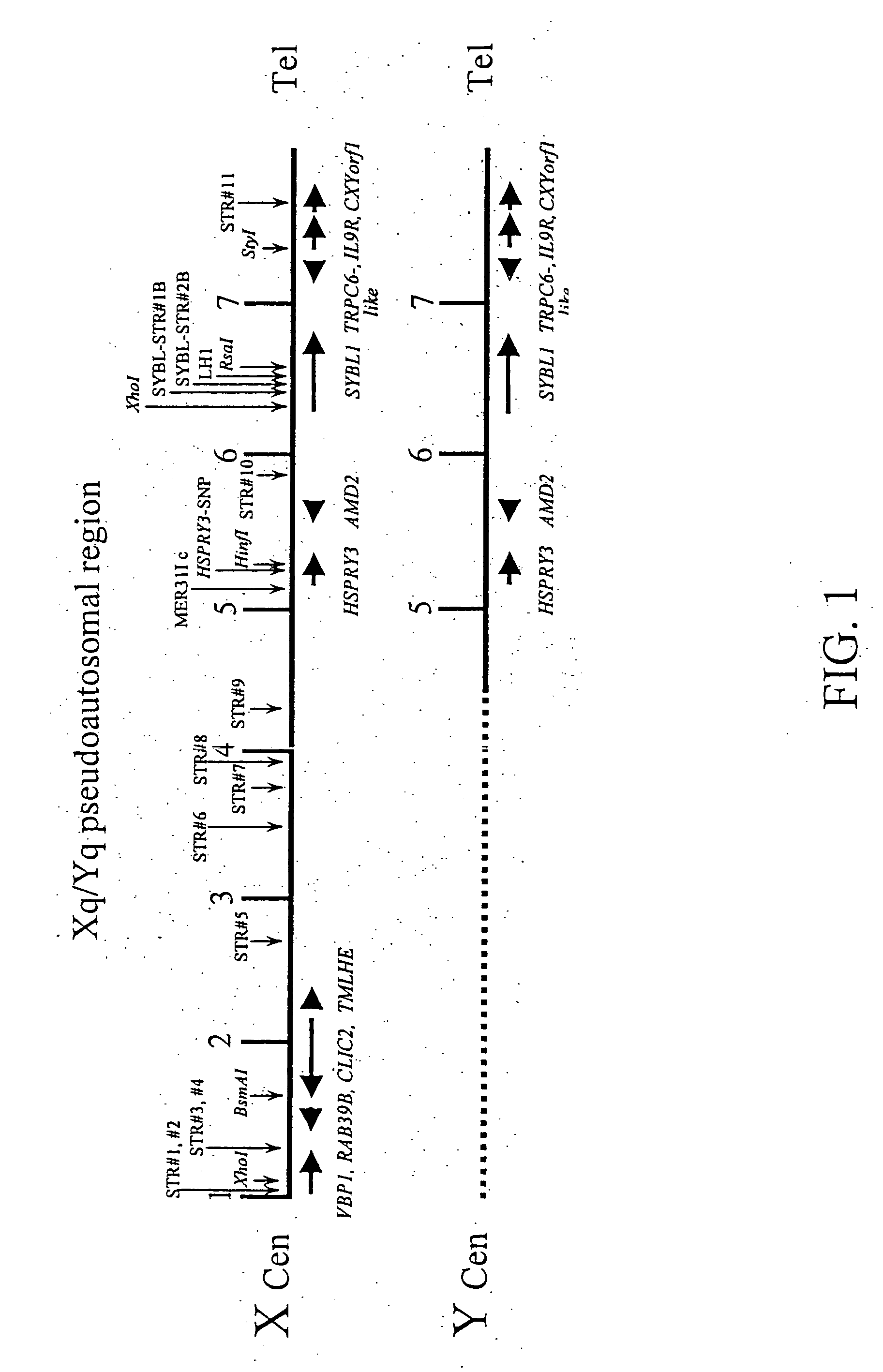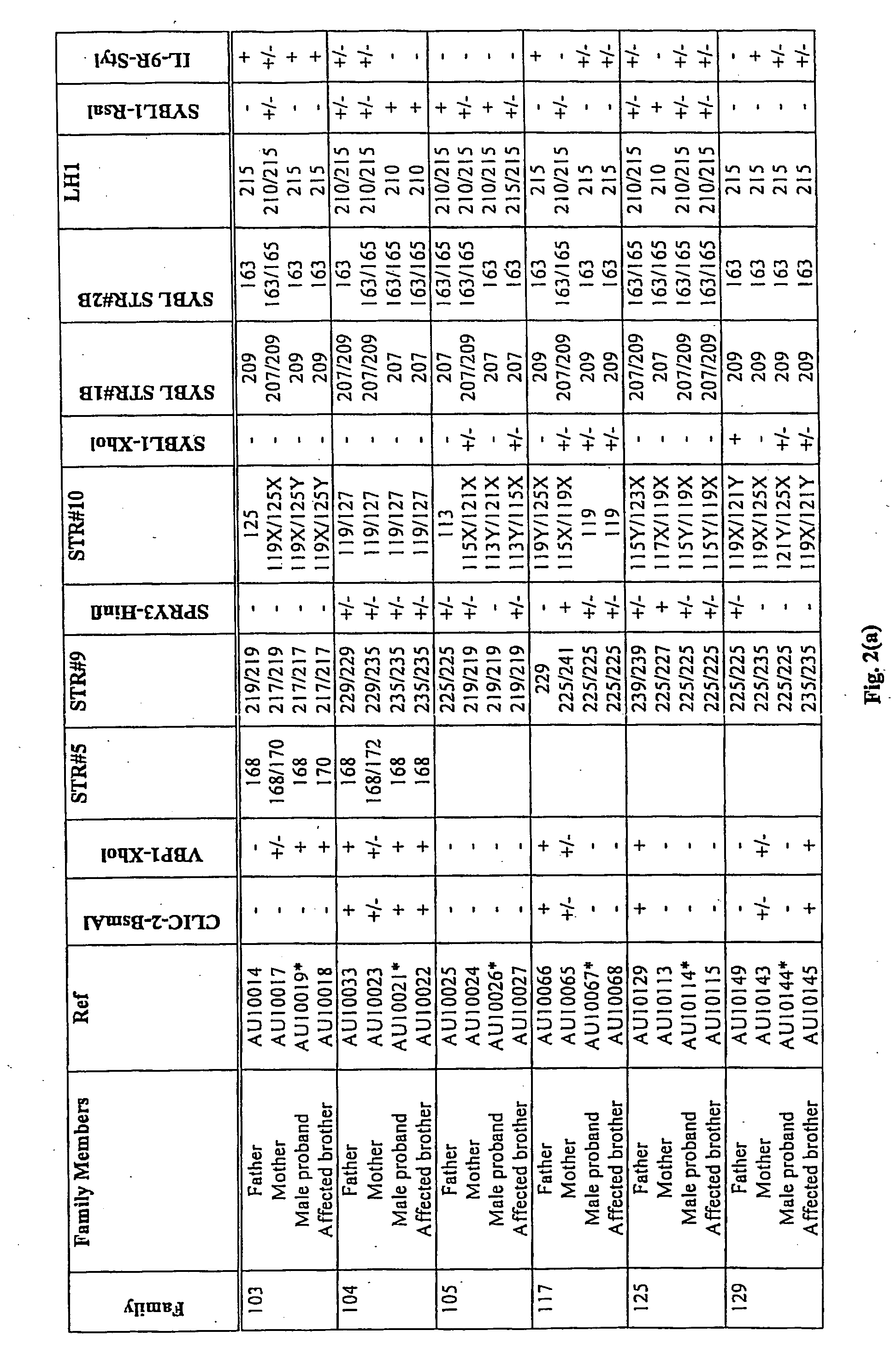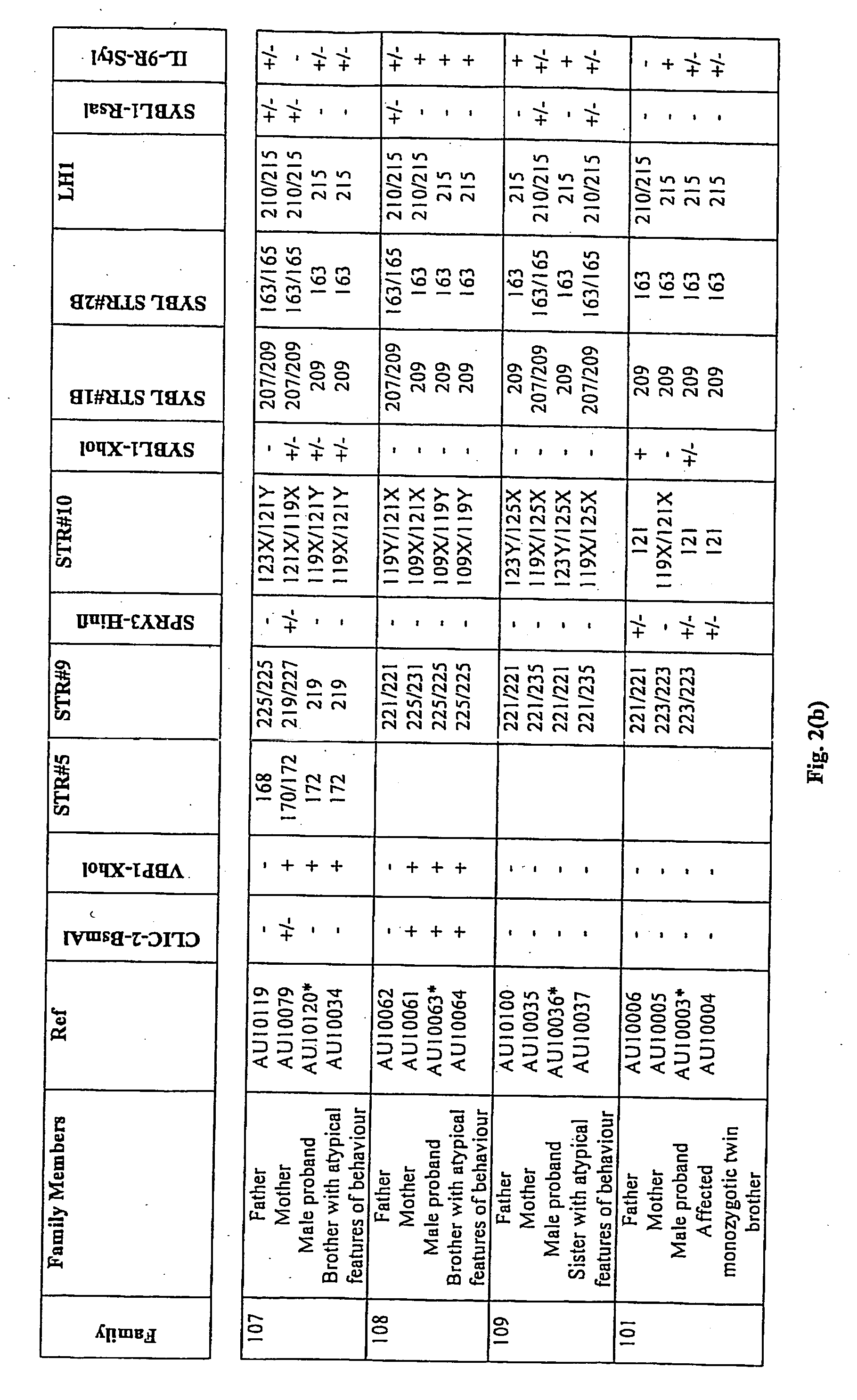Method
- Summary
- Abstract
- Description
- Claims
- Application Information
AI Technical Summary
Benefits of technology
Problems solved by technology
Method used
Image
Examples
example 1
[0182] Origin of DNA Samples from Families with Autism (Normal and Affected Individuals) (See http: / / coriell.umdnj.edu / ).
[0183] DNA samples were obtained from the United States Coriell Cell Repository (CCR) Autism Resource comprising a collection of nineteen families, which in addition to probands, includes some or all of the following: affected and non-affected siblings, parents and grandparents. Unrelated controls were obtained from the CCR / National Institute of Aging Longevity Collection, and consisted of healthy young adults, and from the CCR / National Institute of General Medical Sciences Caucasian Panel (HD200CAU). FIG. 2 lists the different families examined from the Autism Collection; FIG. 4 lists Control samples. For the analysis of the HSPRY3 promoter region, an additional set of thirty two samples from normal young females of Irish origin, collected under the auspices of a Reproductive Tissue Bank, were analysed.
example 2
[0184] Identification of Polymorphic Genetic Markers in the Xq / Yq PAR and Adjacent X Chromosome-specific Region.
[0185] Public DNA sequence databases were scanned for polymorphisms in the region that would allow restriction enzyme fragment length polymorphisms (RFLPs) to be developed for genetic studies. PCR primers spanning the polymorphic site were developed for amplification of short PCR products from genomic DNA, as shown in FIG. 3. PCR products were digested with the appropriate restriction enzyme and the resultant digestion products were analysed by agarose gel electrophoresis. Each sample genotype was scored as + / +, + / −, or − / −, depending on whether a digestion product was present (+) or absent (−) (FIGS. 2, 3, 4). Additional polymorphic genetic markers were developed by scanning the DNA sequence of genomic contig NT—025307.13 for short tandem (dinucleotide) repeats (STRs), which are likely to provide additional polymorphisms for genetic studies. Identified repeats were spann...
example 3
[0186] Detection of Association of Loss-of-Heterozygosity (LOH) at the SYBL1 Locus with Autism.
[0187] The entire CCR Autism Collection was genotyped for the following markers in the Xq / Yq PAR: SYBL1-XhoI, SYBL1-STR#1B, SYBL1-STR#2B, LH1, RsaI, StyI (FIGS. 1, 2, 4). In addition, the RsaI marker was applied to the Control samples listed in Example 1 (FIG. 4).
[0188] Controls were:
[0189] Published genotype frequencies from the public databases for RsaI (http: / / www.ncbi.nlm.nih.gov / SNP / snp_ref.cgi?rs=1883051), which were similar to those found in our experiments on the Control samples listed in Example 1.
[0190] Parents / unaffected family members. All listed markers between SYBL1-XhoI and StyI (FIGS. 1, 2, 4) were applied to grandparents, parents and siblings comprising eighteen fathers, nineteen mothers, and nineteen other unaffected family members (fifty six unaffected family members in total).
[0191] The RsaI marker was applied to the entire HD100CAU caucasian panel comprising two h...
PUM
| Property | Measurement | Unit |
|---|---|---|
| Length | aaaaa | aaaaa |
Abstract
Description
Claims
Application Information
 Login to View More
Login to View More - R&D
- Intellectual Property
- Life Sciences
- Materials
- Tech Scout
- Unparalleled Data Quality
- Higher Quality Content
- 60% Fewer Hallucinations
Browse by: Latest US Patents, China's latest patents, Technical Efficacy Thesaurus, Application Domain, Technology Topic, Popular Technical Reports.
© 2025 PatSnap. All rights reserved.Legal|Privacy policy|Modern Slavery Act Transparency Statement|Sitemap|About US| Contact US: help@patsnap.com



